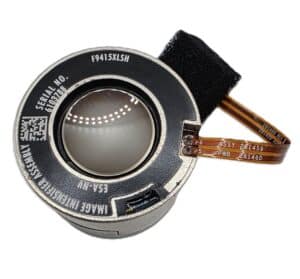How to Choose the Best Gen 3 Elbit Image Intensifier Tube for Your Night Vision Setup

Elbit White Phosphor Image Intensifier Tube
Selecting the appropriate Gen 3 Elbit image intensifier tube is among the most critical of decisions that you will make when building or upgrading a night vision system. Whether you are outfitting equipment for professional security, search and rescue, wildlife observation, or tactical use, the tube is the heart of all night vision systems, controlling all factors of clarity, sensitivity, and low-light performance. Gen 3 Elbit Tube has significant value due to its Gallium Arsenide (GaAs) photocathodes, high signal-to-noise ratio, and strong microchannel plates (MCP). However, not all Gen 3 tubes are the same, as tube types vary in terms of resolution, gain, halo performance, and lifespan.
Define your primary use case and performance priorities.
Begin by being clear about your intended use of the night vision system. Surveillance and typical law enforcement will often emphasize resolution and contrast for identifying people’s facial features and reading license plates, and hunting or wildlife observation would focus on high sensitivity and a larger field of view for observing movement at a distance. Search and rescue will require performance in low-light and varied weather conditions. Once you have established your primary intended use, prioritize the features you care about—resolution, SNR, halo, IR sensitivity vs. ruggedness—so that you can evaluate the tube on the factors that are of greatest importance to you.
Understand the key technical specs.
Three specifications primarily influence the functioning of tubes: resolution (measured in line pairs per millimeter), gain (the extent of light amplification), and signal-to-noise ratio (SNR). Higher resolution means sharper images and better detail at a distance; higher gain means brighter images in dark situations but will increase the halo around very bright light sources; and SNR shows the image clarity, with higher SNR providing cleaner and more usable images in very low-light situations. You should prioritize tubes with high resolution and high SNR for identification work; prioritize gain and degree of photocathode sensitivity if you only need to detect something in nearly total darkness. Review all the data sheets closely and weigh the specs based on your ranked needs.
Photocathode type and microchannel plate
Generation 3 tubes from Elbit typically use GaAs photocathodes, significantly increasing both their near-infrared sensitivity and low-light response. Within Generation 3, consistency and durability are affected by the photocathode manufacturing quality and the characteristics of the micro-channel plate (MCP). A high-quality MCP provides even gain distribution across the image area, limited ion feedback, and longer operational life. Specific to all manufacturer data, the MCP open-area ratio and film treatments for the ion barrier may influence halo, blooming, and operational life. When and if possible, ask for performance curves or independent test results that show the performance of Generation 3 tubes—especially information related to performance at various illumination levels.
Compatibility with your housing and system electronics
A tube with performance marks will be meaningless if it doesn’t physically or electronically fit your night vision monocular, goggles, or sight. It is important to check the pinout, the ability of the tube housing to be mounted to your existing hardware, and the bias voltage requirement of the tube. Some tube housings will provide adjustable gain control or auto-brightness limiting. Be sure that the voltage limit and control interface of the intensifier tube match your hardware. Confirm if the tube is sealed environmentally or has any kind of shock rating; a tube rated for harsh conditions will always hold up better in field usage. If you are going to retrofit an existing unit, make sure you take measurements and verify the connector type before purchasing. A dependable warranty and service network will save both time and money over the lifetime of a purchased tube, particularly for professionals, where consistency and reliability are vital.
The Last Words
Finding a good Gen 3 Elbit image intensifier tube requires a reasonable amalgamation of technical know-how with practical thinking. Again, know your intended use, and value what specification matters to your Echo mission; it may be resolution, SNR, gain, or trafficking. Always check compatibility with your existing hardware; make sure it is an authentic intensifier tube rated for the environment you are going to operate in. Weigh the initial cost of the tube against the total lifecycle cost for using the tube and warranty support. Always test under the lighting conditions that you will actually be working in. With some reasonable due diligence, regular maintenance, and checking for authenticity, your night vision system will provide you with the visibility, reliability, and lifespan you need, whether the lights are on or off.
